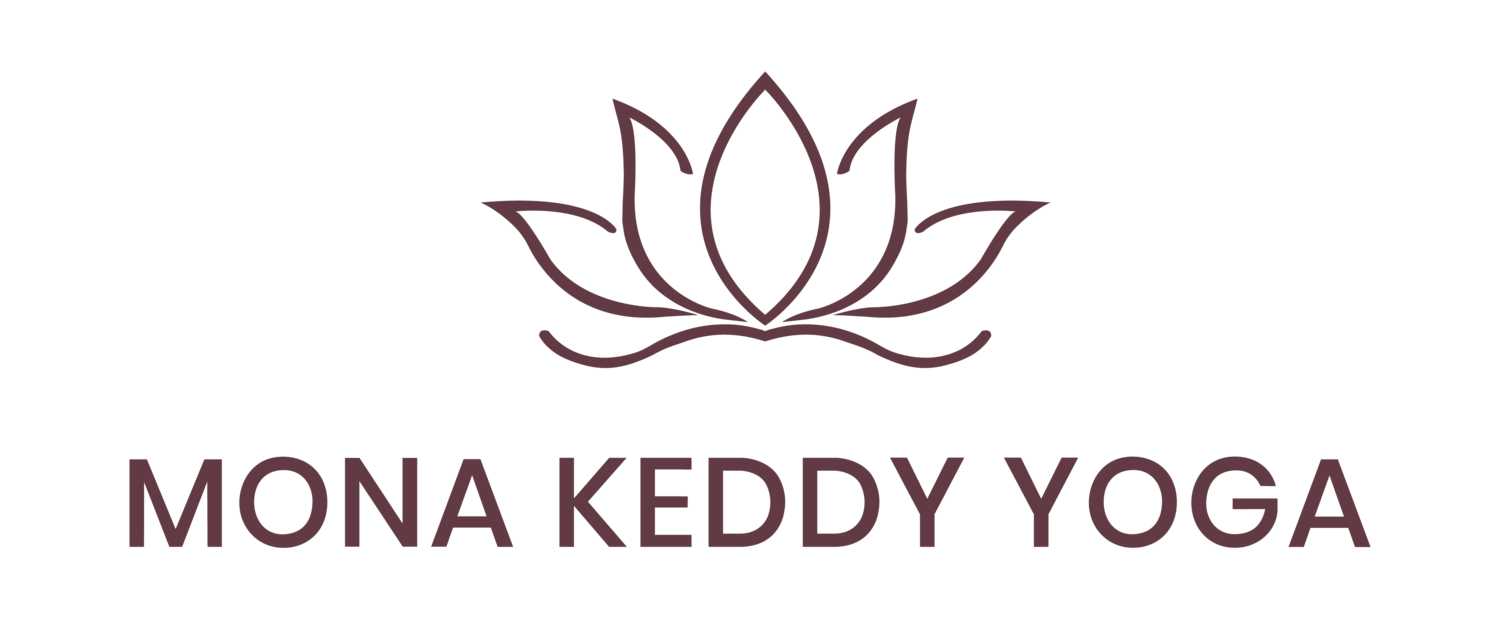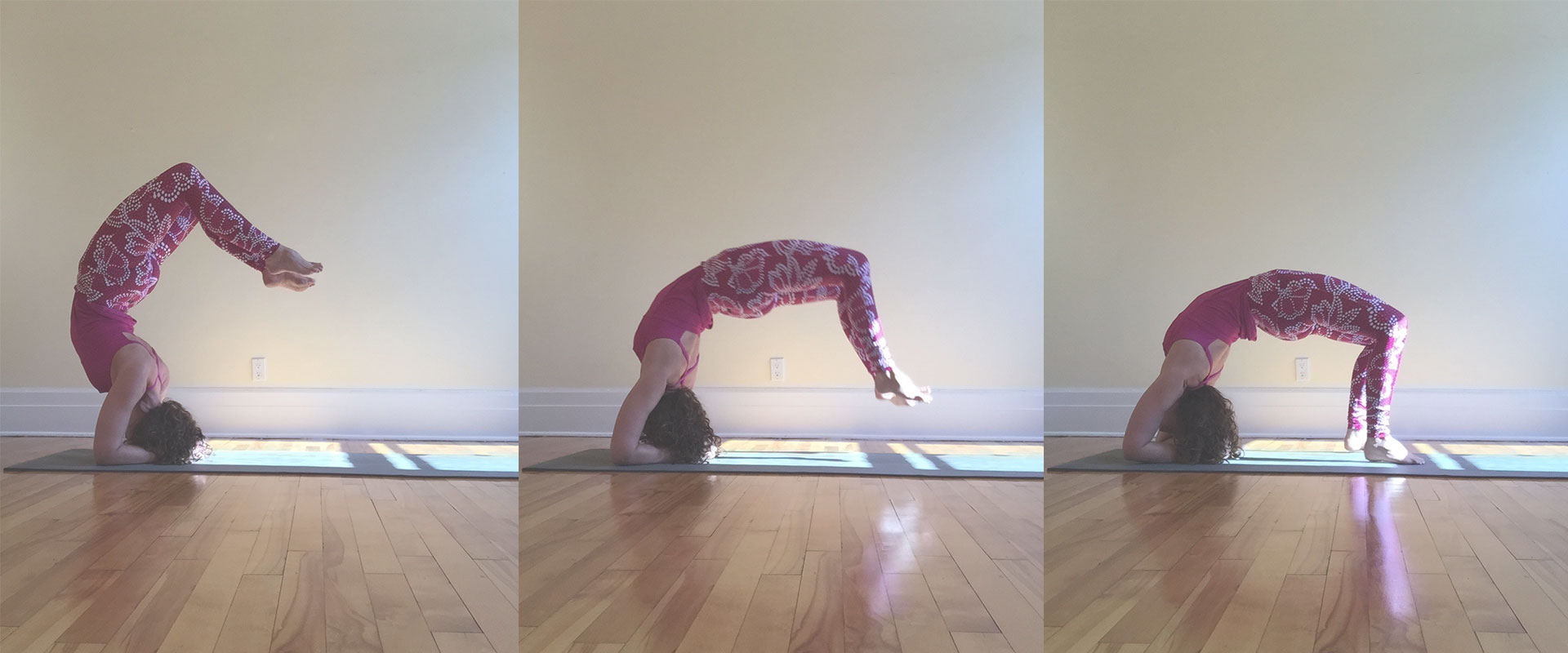Teaching and Trust
April 16, 2015
On Saturday, I taught the last workshop in a four-part series on the intermediate backbends as defined in Light on Yoga. This one focused on dropping from Sirsasana I (headstand) into Viparita Dandasana as the beginning stages of Mandalasana. Dropping over backwards into unknown and unseen territory is scary and as a teacher preparing to help people approach this pose, I started thinking about fear.
The yoga journey is one of confronting fear. I believe the poses are designed, in part, to bring up our fears. It is scary to step our feet wider apart in the standing poses. It is scary to go upside down, to sit in the discomfort of hip openers and forward bends, to balance on our hands and to bend over backward into space we cannot see. For each of us there is a pose or a category of poses that makes us want to leave the room. Learning in general and certainly our asana practice often involves stepping out of our comfort zone and this is anxiety provoking.
As a yoga teacher, we have a responsibility to handle the fears of the students. In preparing for the workshop, I considered how do I hold the fear of the students, which became interwoven with how do I work with fear inside myself. Often courage is presented as the antidote to fear. If we are brave, we banish fear, so the story goes. I am not sure that this is fully accurate for me. What removes fear, for me, is trust.
Trust is defined as a firm belief in the reliability, truth, ability or strength of someone. As a teacher leading workshops on more advanced poses and in everyday teaching, I am asking the students to trust me. To trust that I know what is possible for them, to trust that I will prepare them and keep them safe, to trust I know their edges as well or better than they know them. Ultimately, I am asking them to trust themselves.
Yoga, as a path, asks that we learn more and more deeply to trust ourselves. As practitioners, we practice poses that move us into uncomfortable places and we survive the experience. When we are hurt (on any level), as we heal, we understand something deeper about our bodies, our nature and our connection to the creative energy of the universe. When we explore what it means to be afraid without quitting, we strengthen ourselves and deepen our faith as a result. As we become skilled in placing our bodies, adjusting our perceptions and making appropriate choices, we hone our ability to make skilled choices off the mat. We learn to put faith in our intuition, even when it seems contrary to what makes sense. We develop the ability “see” what is behind us as we drop-over into unseen territory. We become trusting of ourselves
So, as a teacher leading students through moments of fear, what has to be built is not my ability to do advanced asana (although that may help). It is my cultivated ability to trust in my own knowing that carries the student. I know myself, I trust myself. My ability to trust myself is the legacy of the lineage of teachers that have come before me – both the ones I have had direct contact with and the ones I will never know. And, it is by the Grace of the students’ willingness to trust me, perhaps at moments more than they trust themselves, that I teach. And through my faith, in them and in myself, they are able confront their fear, try, succeed and trust themselves a little more along the way. This is the lineage of yoga we step into as we place ourselves on our mat. May it continue to guide us.

